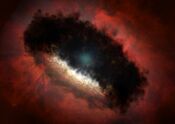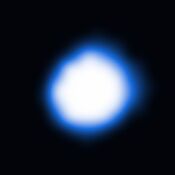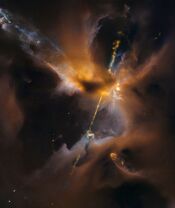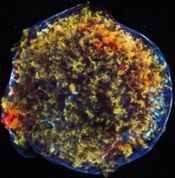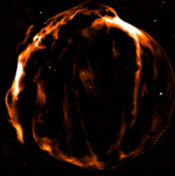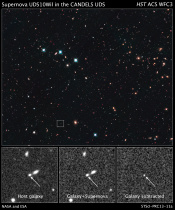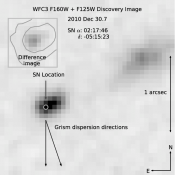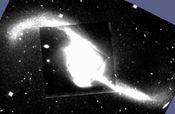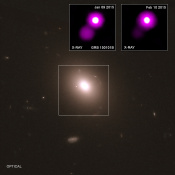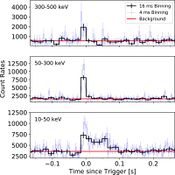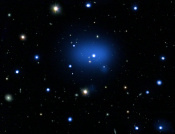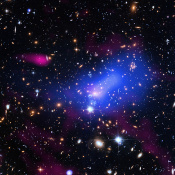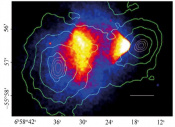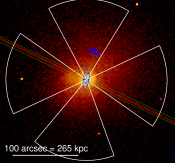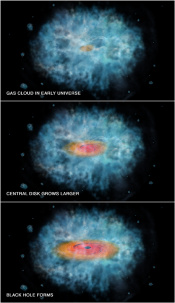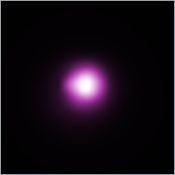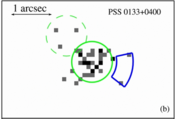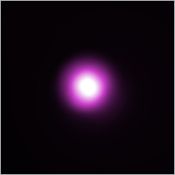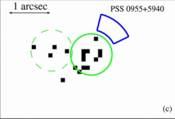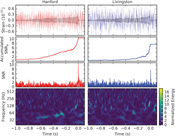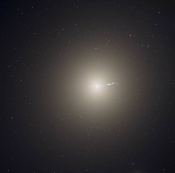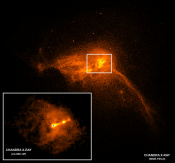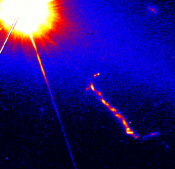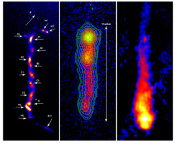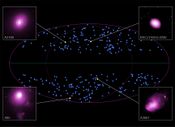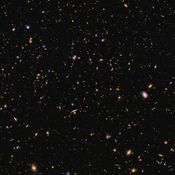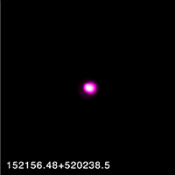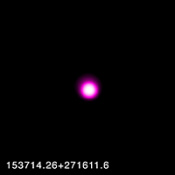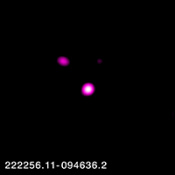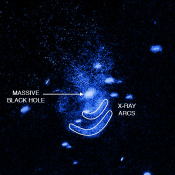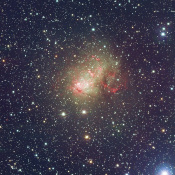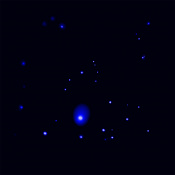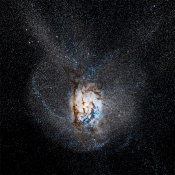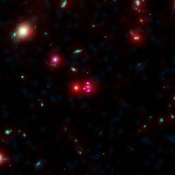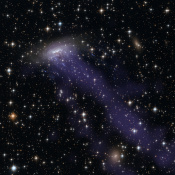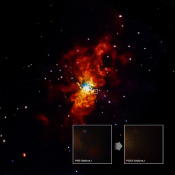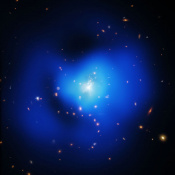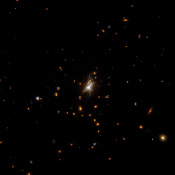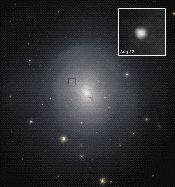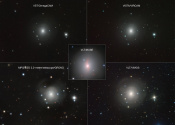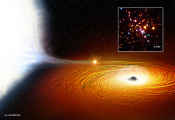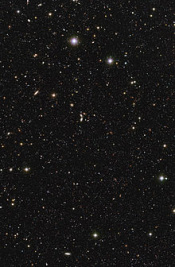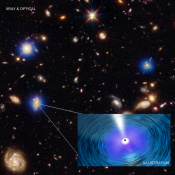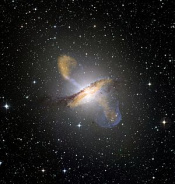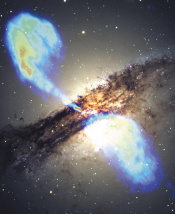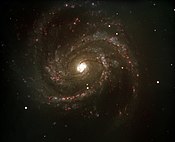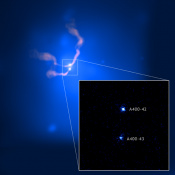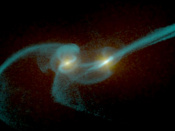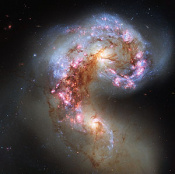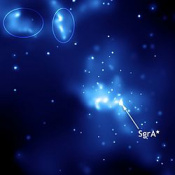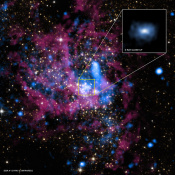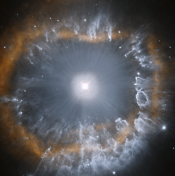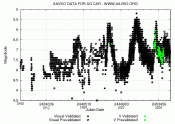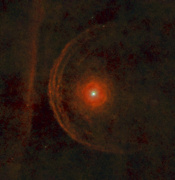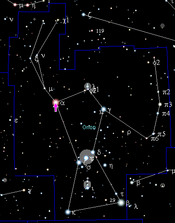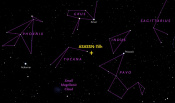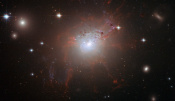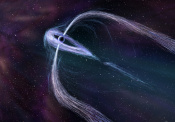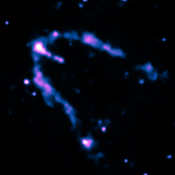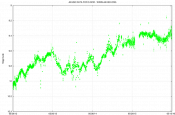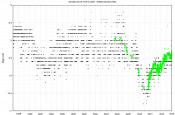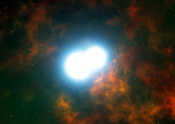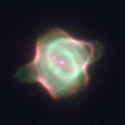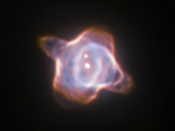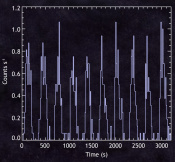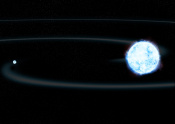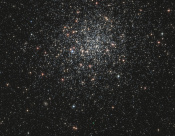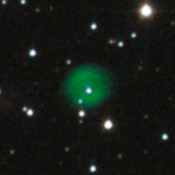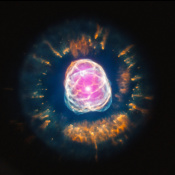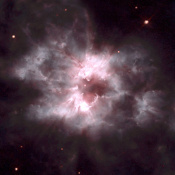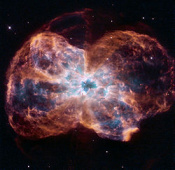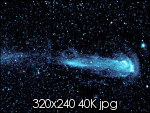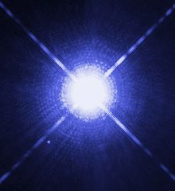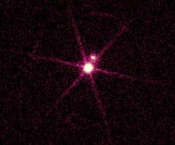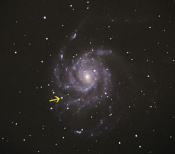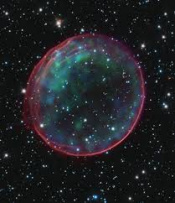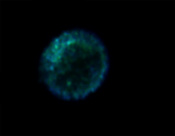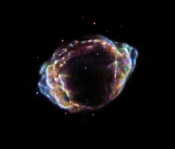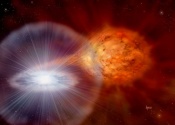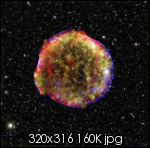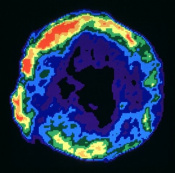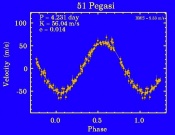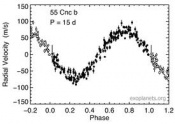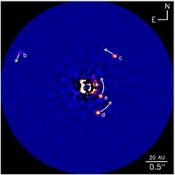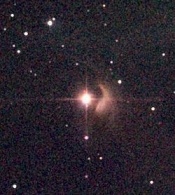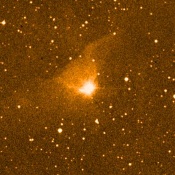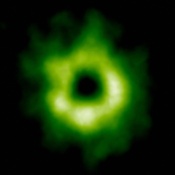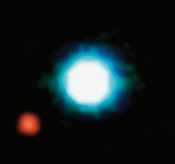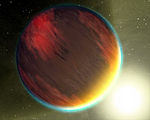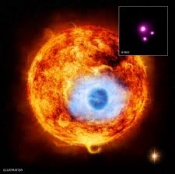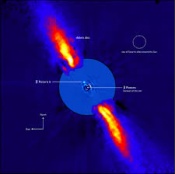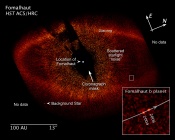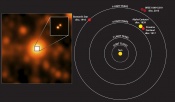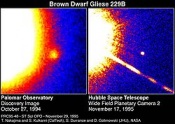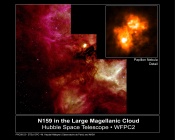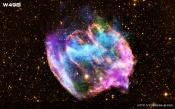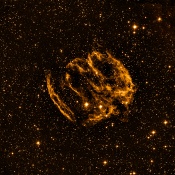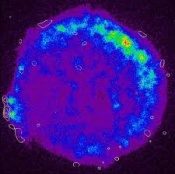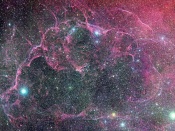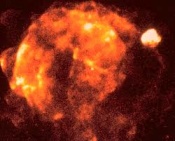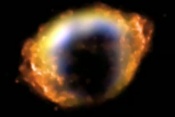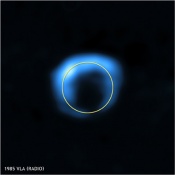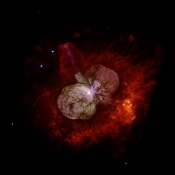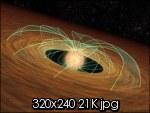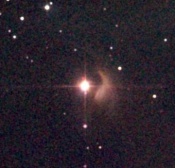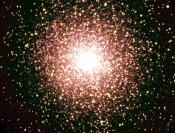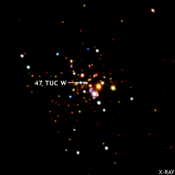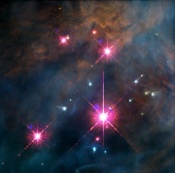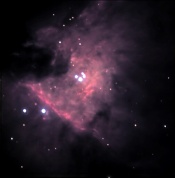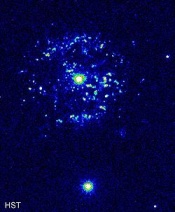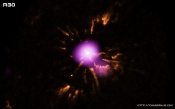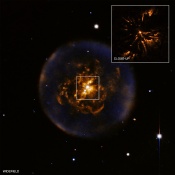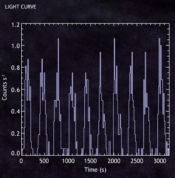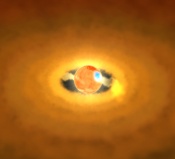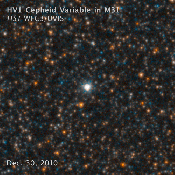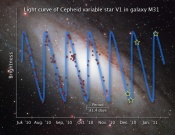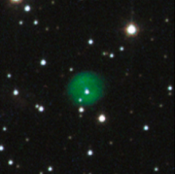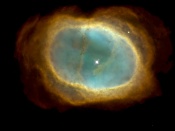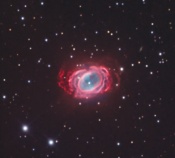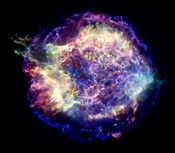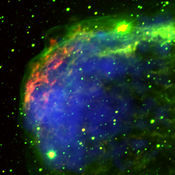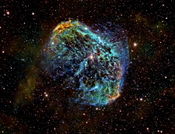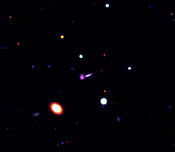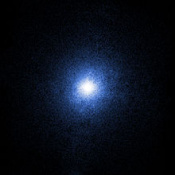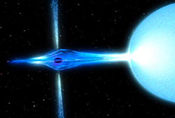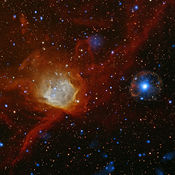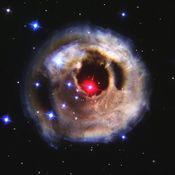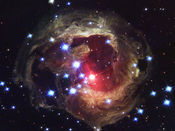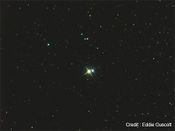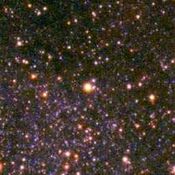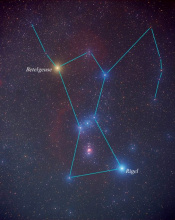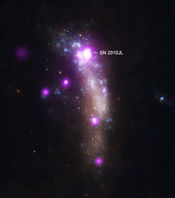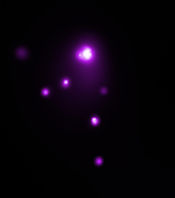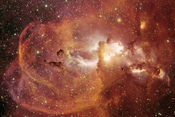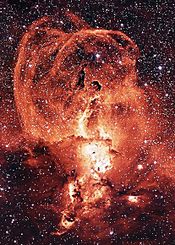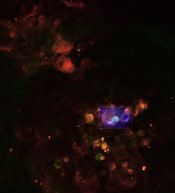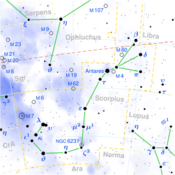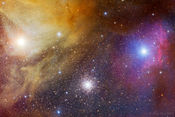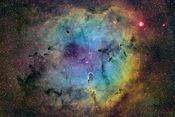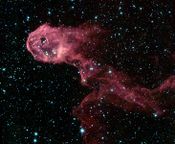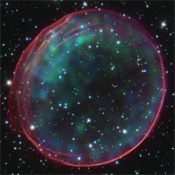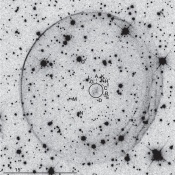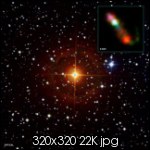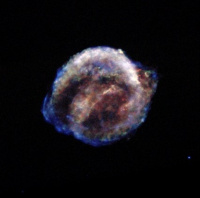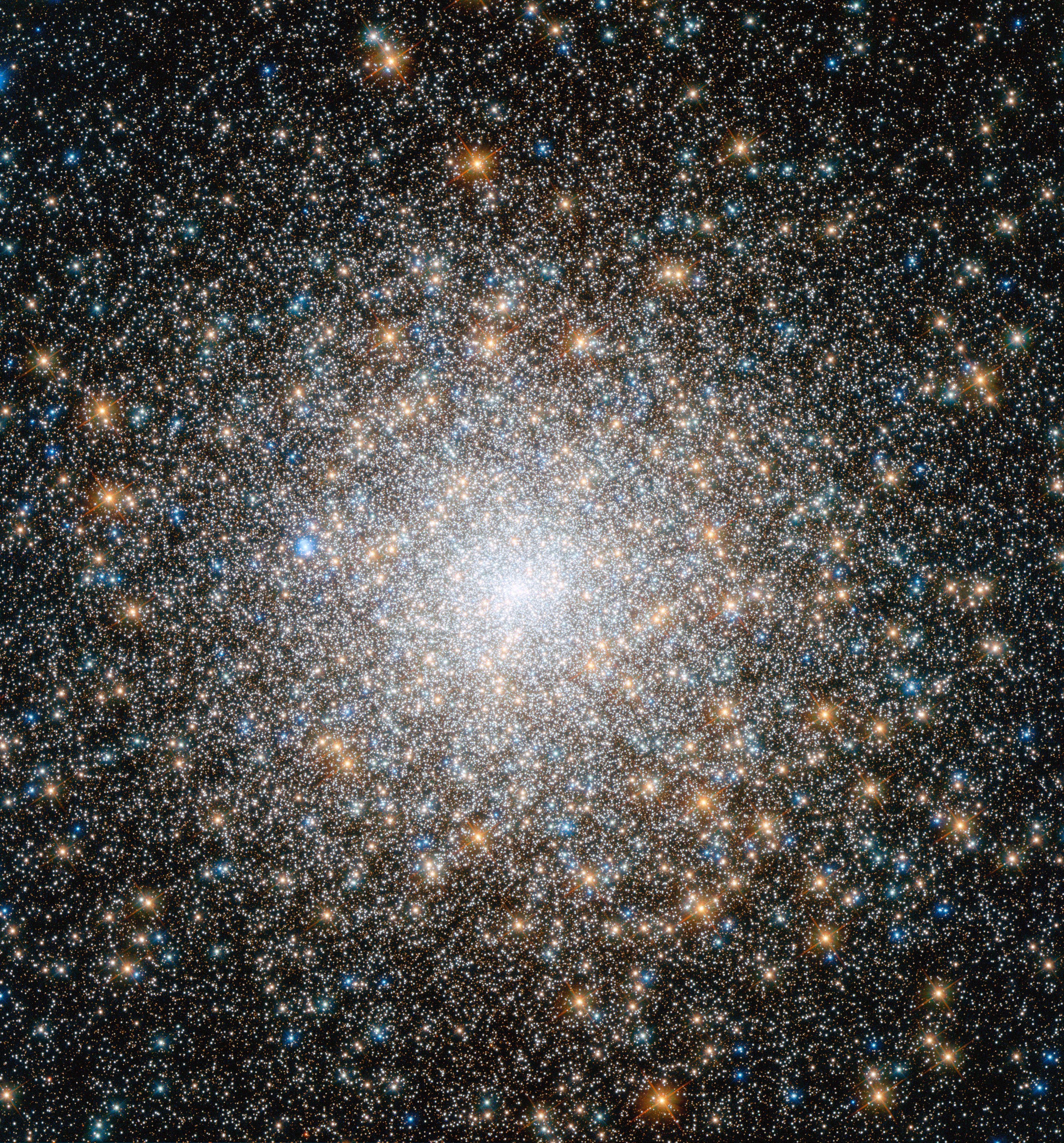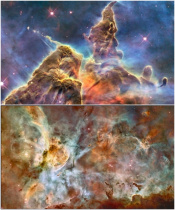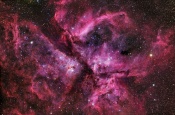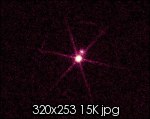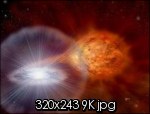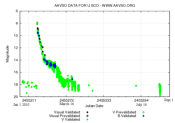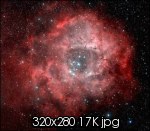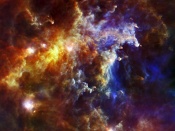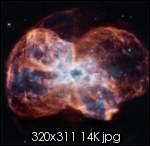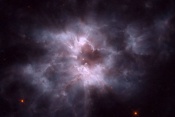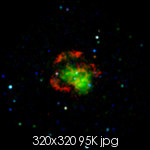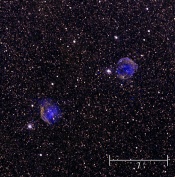| Name
|
Images
|
Constellation
|
Magnitude
|
Distance
|
Coordinates
|
External Links
|
| Epsilon Aurigae
|

|
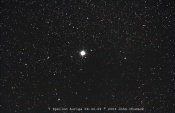
|
Auriga
|
Apparent: 2.9 normally, 3.8 during eclipse; Absolute: -6.0
|
~2000 light years (ly)
|
Right Ascension: 05h 01m 58.1s; Declination: +43° 49’ 24”
|
AAVSO: Epsilon Aurigae Citizen Sky: Epsilon Aurigae
|
| Epsilon Aurigae is an eclipsing binary. One part is a white giant, and the other appears to be a star shrouded by a dark cloud of dust. In the middle of this cloud, there is a clearing where the star probably is, so during an eclipse, the system appears momentarily brighter as this clearing passes over the giant. An observation project of Epsilon Aurigae took place from 2009-2011.
|
| NGC 6240 (IC 4625, UGC 10592, PGC 59186, VV 617)
|
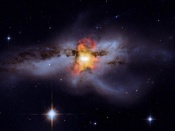
|

|
Ophiuchus
|
Apparent: 12.8
|
~330 million ly
|
Right Ascension: 16h 52m 58.9s; Declination: +02° 24' 03"
|
Chandra: NGC 6240 NASA APOD: NGC 6240
|
| NGC 6240 is an extremely luminous infrared galaxy (ULIRG). It is the result of two smaller galaxies colliding to form one large galaxy with two nuclei and an irregular shape. Possible hypotheses for the high infrared emission are intense star formation or the presence of one or two AGNs.
|
| 3C 321
|

|
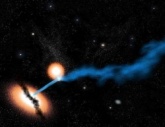
|
Serpens
|
|
~1.4 billion ly
|
Right Ascension: 15h 31m 42.7s; Declination:: +24° 04’ 25.00"
|
Chandra: 3C 321 Space.com: 3C 321
|
| 3C 321 is a binary system of galaxies. One of the galaxies is directing a large jet of energy at its companion. It is nicknamed the “Death Star Galaxy” and it is theorized that the galaxy with the jet contains a supermassive black hole. It was discovered in 2007.
|
| Centaurus A (NGC 5128, Arp 153, PGC 46957, Caldwell 77, 4U 1322-42)
|
|
|
Centaurus
|
Apparent: 6.84
|
~15 million ly
|
Right Ascension: 13h 25m 27.6s; Declination: -43° 01’ 09”
|
SEDS: Centaurus A Solstation.com: Centaurus A
|
| Cen A is one of the closest radio galaxies containing an AGN to Earth. It is the fifth brightest galaxy in the sky, although it is mostly only observable from the Southern Hemisphere. It is slowly consuming another spiral galaxy, causing rapid star formation, helping the radiation coming from the nucleus. The supermassive black hole at the center sends out jets of X-rays and radio waves in which the inner parts are moving at one half of the speed of light.
|
| Stephan's Quintet (HGC 92, Arp 319, VV 288)
|
|
|
Pegasus
|
Apparent: 13.9
|
300-370 million ly
|
Right Ascension: 22h 35m 57.5s; Declination: +33° 57’ 36”
|
Chandra: Stephan's Quintet NASA APOD: Stephen's Quintet
|
| Stephan's Quintet is a visual grouping of five galaxies. Four of the galaxies are in a compact group, and collisions have altered the form of the galaxies. Eventually, the four will likely merge into one large galaxy. The collisions have caused emissions of both x-rays and molecular hydrogen. The four than are physically interlocked are NGC 7317, NGC 7318a, NGC 7318b, and NGC 7319. NGC 7320 is not actually part of the interacting cluster but is a foreground object in the same area as the other galaxies. The galaxies NGC 7335, NGC 7336, and NGC 7337 in the NGC 7331 group, or Deer Lick Group, was used to determine this. Occasionally, the tidal forces cause NGC 7318b to emit huge shock waves of X-rays. It is also the brightest member of the group with an apparent magnitude of 13.9. NGC 7319 is classified as a Type 2 Seyfert galaxy.
|
| MACSJ0717.5+3745
|
|
|
Auriga
|
|
|
Right Ascension: 07h 17m 31.00s; Declination: +37° 45’ 39.60”
|
Chandra: MACSJ0717.5+3745
|
| MACSJ0717.5+3745 (MACSJ0717 for short) a galaxy cluster where four separate galaxies have been involved in a collision. The collisions are caused by a stream of hot gas known as a filament that pours into the cluster. It is one of the most complex clusters ever studied and was discovered in 2003.
|
| Bullet Cluster (1E 0657-56)
|
|
|
Carina
|
|
|
Right Ascension: 06h 58m 37.9s; Declination: - 55° 57’ 0”
|
Chandra: Bullet Cluster NASA APOD: Bullet Cluster
|
| The Bullet Cluster is a system of two colliding clusters of galaxies. It is one of the best examples of evidence for the existence of dark matter. In the collision, the stars mostly did not interact, but the gases and other matter were significantly altered. This other matter is hypothesized to be dark matter, and is supported by the supposed Modified Newtonian Dynamics that explains the lensing phenomenon in the cluster. It is one of the hottest known clusters of galaxies.
|
| Perseus A (NGC 1275, PGC 12429, UGC 2669, Caldwell 24, 3C 84, QSO B0316+413)
|
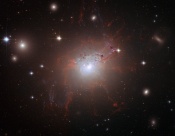
|
|
Perseus
|
Apparent: 12.6.
|
|
Right Ascension: 03h 19m 48.1s; Declination: +41° 30’ 42”
|
NASA APOD: Perseus A Hubble Heritage: Perseus A
|
| Perseus A is a Type 1.5 Seyfert galaxy, which signifies that both broad and narrow lines on the emission spectrum are present, but there are less pronounced broad lines than a Type 1 Seyfert galaxy. It consists of two galaxies, one in the center and another that lies in front of it. Long filaments of gas stretch out from the system.
|
| SN 2006gy
|
|
|
Perseus
|
Peak Apparent: 14.2
|
|
Right Ascension: 03h 17m 27.10s; Declination: +41° 24’ 19.50”
|
Chandra: SN 2006gy NASA APOD: SN 2006gy
|
| SN 2006gy was an extremely energetic supernova that reached an extremely high luminosity level. The large size of the star caused it to gain energy in its core, eventually causing it to be blown apart violently. This type of supernova is sometimes referred to a hypernova, and it compared to the star Eta Carinae in the Milky Way.
|
| SN 1996cr
|
|
|
Circinus
|
|
|
Right Ascension: 14h 13m 10.05 s; Declination: -65° 20’ 44.8”
|
Chandra: SN 1996cr
|
| SN 1996cr is a powerful supernova that was noticed in a Chandra image after it was taken, and was widely studied afterward. The star exploded between 1995 and 1996, but was not discovered until 2001. It is of interest because it is located in an active galaxy with a growing supermassive black hole and rapid star formation.
|
| NGC 4603 (PGC 42510)
|
|
|
Centaurus
|
Apparent: 12.3
|
|
Right Ascension: 12h 40m 55.2s; Declination: -40° 58’ 35”
|
NASA APOD: NGC 4603 HyperPhysics: NGC 4603
|
| NGC 4603 is a large spiral galaxy. It is the most distant galaxy in which Cepheids have been used to determine the distance to the galaxy. Using this distance and determining recession velocity, it has served as a benchmark for determining the Hubble constant (70 km/sec/Mpc ±10%).
|
| NGC 7771 (VV 2002)
|
|
|
Pegasus
|
Apparent: 12.9
|
|
Right Ascension: 23h 51m 25.0s; Declination: +20° 06’ 49”
|
NASA APOD: NGC 7771
|
| a large spiral galaxy in close proximity to two other galaxies. This trio of galaxies is named the NGC 7771 group after its largest member, a spiral, the three galaxies, NGC 7769-7771, have passed by each other closely and will eventually form one huge galaxy. It is considered an accurate representation of the formation of the Milky Way. Dusty nebulae in front of the group obstruct clear viewing.
|
| NGC 2623 (Arp 243)
|
|
|
Cancer
|
Apparent: 13.9
|
|
Right Ascension: 08h 38m 24.1s; Declination: +25° 45’ 01”
|
NASA APOD: NGC 2623 Hubble: NGC 2623
|
| a system of two or more interacting galaxies. The galaxies have formed one common nucleus, but there are two strands of stars branching out from the galaxy, indicating a merger has taken place.
|
| JKCS041
|
|
|
|
|
|
|
Chandra: JKCS041
|
| An extremely distant galaxy cluster, about 10.2 billion years away. This object may help scientists better understand how the universe developed at an early age.
|
| Messier 77 (NGC 1068, UGC 2188, PGC 10266, Arp 37, 3C 71)
|
|
|
|
|
|
|
Chandra: Messier 77 Universe Today: Messier 77
|
| One of the nearest and brightest galaxies containing a supermassive black hole. Million-mile per hour wind from the black hole shapes the galaxy.
|
| H2356-309
|
|
|
|
|
|
|
Chandra: H2356-309
|
| A collection of extremely distant warm hot intergalactic medium, some of the “missing matter” in the nearby universe.
|


